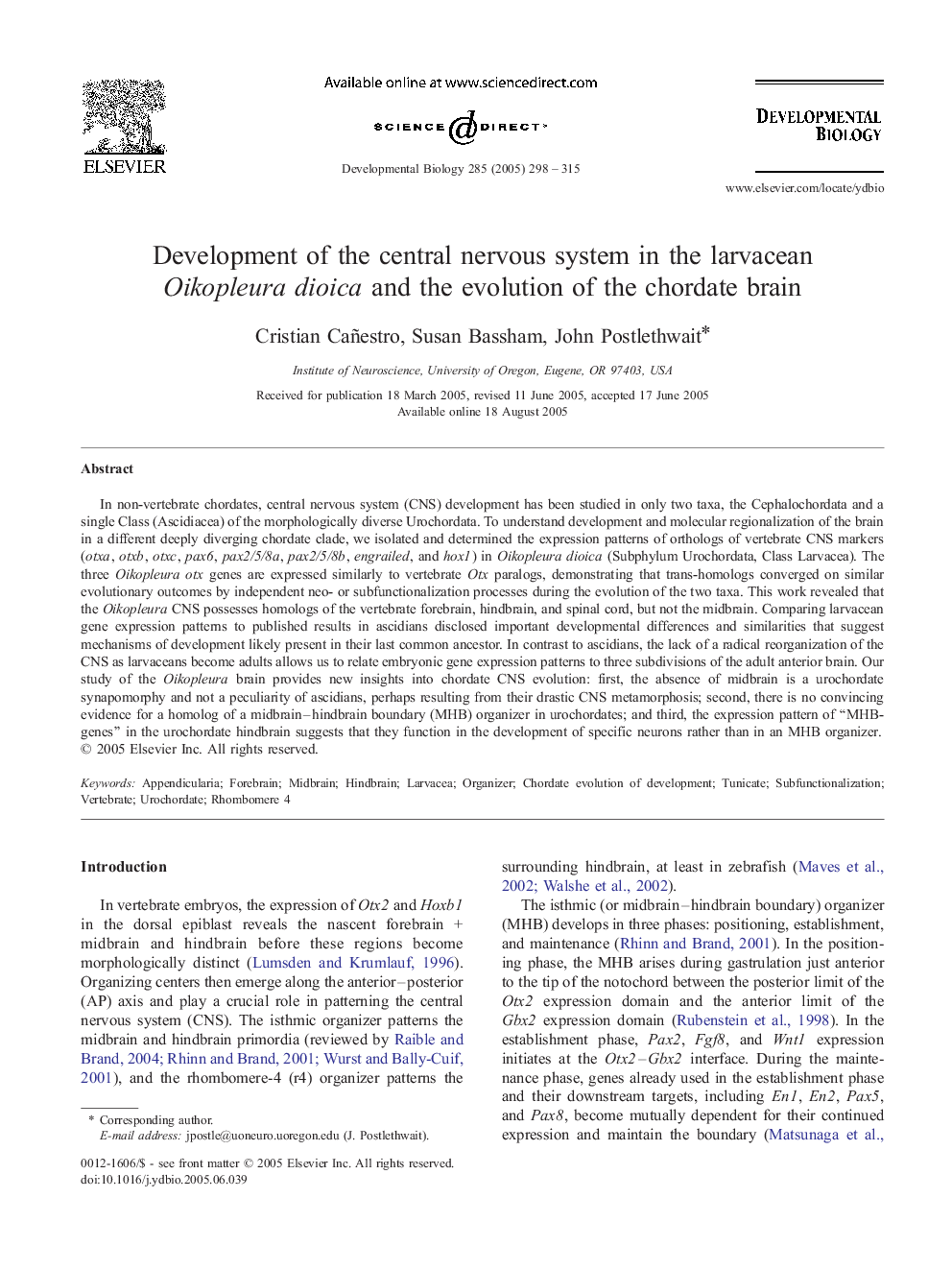| کد مقاله | کد نشریه | سال انتشار | مقاله انگلیسی | نسخه تمام متن |
|---|---|---|---|---|
| 10934015 | 1093877 | 2005 | 18 صفحه PDF | دانلود رایگان |
عنوان انگلیسی مقاله ISI
Development of the central nervous system in the larvacean Oikopleura dioica and the evolution of the chordate brain
دانلود مقاله + سفارش ترجمه
دانلود مقاله ISI انگلیسی
رایگان برای ایرانیان
کلمات کلیدی
موضوعات مرتبط
علوم زیستی و بیوفناوری
بیوشیمی، ژنتیک و زیست شناسی مولکولی
بیولوژی سلول
پیش نمایش صفحه اول مقاله

چکیده انگلیسی
In non-vertebrate chordates, central nervous system (CNS) development has been studied in only two taxa, the Cephalochordata and a single Class (Ascidiacea) of the morphologically diverse Urochordata. To understand development and molecular regionalization of the brain in a different deeply diverging chordate clade, we isolated and determined the expression patterns of orthologs of vertebrate CNS markers (otxa, otxb, otxc, pax6, pax2/5/8a, pax2/5/8b, engrailed, and hox1) in Oikopleura dioica (Subphylum Urochordata, Class Larvacea). The three Oikopleura otx genes are expressed similarly to vertebrate Otx paralogs, demonstrating that trans-homologs converged on similar evolutionary outcomes by independent neo- or subfunctionalization processes during the evolution of the two taxa. This work revealed that the Oikopleura CNS possesses homologs of the vertebrate forebrain, hindbrain, and spinal cord, but not the midbrain. Comparing larvacean gene expression patterns to published results in ascidians disclosed important developmental differences and similarities that suggest mechanisms of development likely present in their last common ancestor. In contrast to ascidians, the lack of a radical reorganization of the CNS as larvaceans become adults allows us to relate embryonic gene expression patterns to three subdivisions of the adult anterior brain. Our study of the Oikopleura brain provides new insights into chordate CNS evolution: first, the absence of midbrain is a urochordate synapomorphy and not a peculiarity of ascidians, perhaps resulting from their drastic CNS metamorphosis; second, there is no convincing evidence for a homolog of a midbrain-hindbrain boundary (MHB) organizer in urochordates; and third, the expression pattern of “MHB-genes” in the urochordate hindbrain suggests that they function in the development of specific neurons rather than in an MHB organizer.
ناشر
Database: Elsevier - ScienceDirect (ساینس دایرکت)
Journal: Developmental Biology - Volume 285, Issue 2, 15 September 2005, Pages 298-315
Journal: Developmental Biology - Volume 285, Issue 2, 15 September 2005, Pages 298-315
نویسندگان
Cristian Cañestro, Susan Bassham, John Postlethwait,